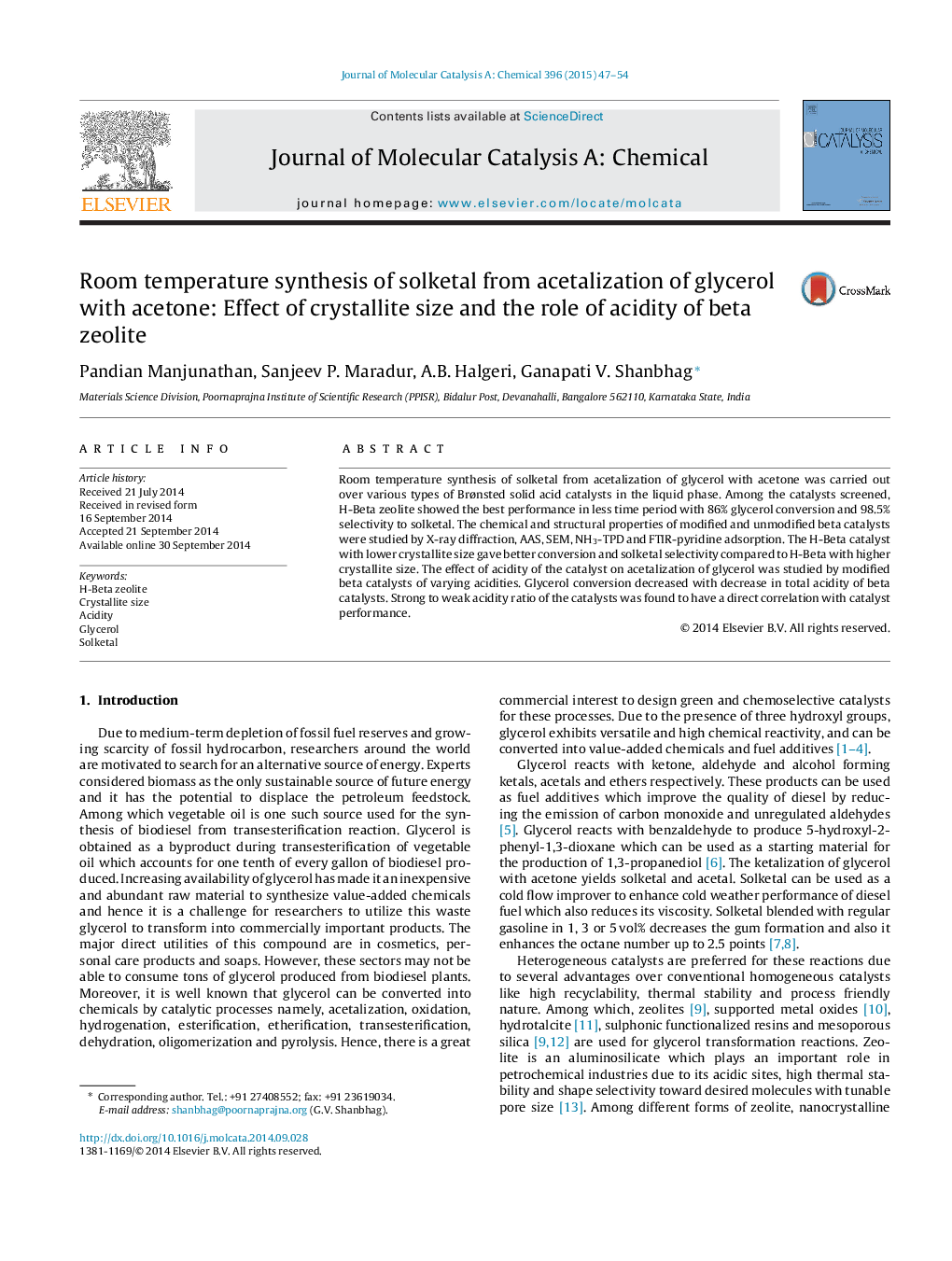| Article ID | Journal | Published Year | Pages | File Type |
|---|---|---|---|---|
| 65249 | Journal of Molecular Catalysis A: Chemical | 2015 | 8 Pages |
•Room temperature synthesis of solketal from acetalization of glycerol with acetone.•H-Beta catalyst showed high catalytic activity compared to other solid acid catalysts.•Effect of crystallite size of H-Beta zeolite on catalytic activity.•Dealumination and ion exchange were used as methods to vary acidity of the catalyst.•Direct correlation of strong/weak acidity ratio with catalyst performance.
Room temperature synthesis of solketal from acetalization of glycerol with acetone was carried out over various types of Brønsted solid acid catalysts in the liquid phase. Among the catalysts screened, H-Beta zeolite showed the best performance in less time period with 86% glycerol conversion and 98.5% selectivity to solketal. The chemical and structural properties of modified and unmodified beta catalysts were studied by X-ray diffraction, AAS, SEM, NH3-TPD and FTIR-pyridine adsorption. The H-Beta catalyst with lower crystallite size gave better conversion and solketal selectivity compared to H-Beta with higher crystallite size. The effect of acidity of the catalyst on acetalization of glycerol was studied by modified beta catalysts of varying acidities. Glycerol conversion decreased with decrease in total acidity of beta catalysts. Strong to weak acidity ratio of the catalysts was found to have a direct correlation with catalyst performance.
Graphical abstractFigure optionsDownload full-size imageDownload high-quality image (305 K)Download as PowerPoint slide
